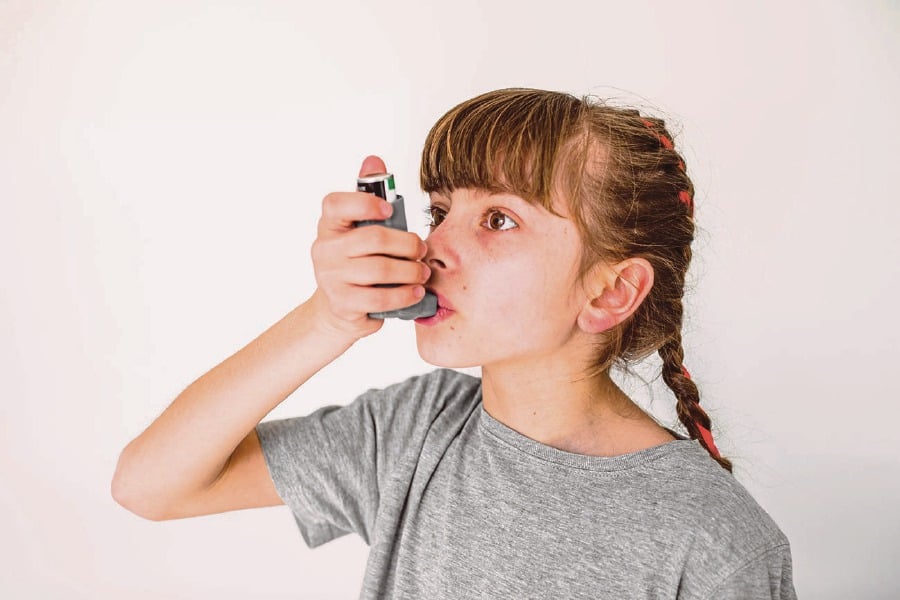CHILDHOOD asthma is a concerning health issue in Malaysia. Its prevalence is high in urban areas and has also increased among children aged 6 to 7 and 13 to 14 years, according to the Global Initiative for Asthma.
Distinguishing asthma from the common cold is essential due to their overlapping symptoms yet differing implications.
The common cold is usually caused by a viral infection and is characterised by a sudden fever, body ache, headache and sore throat. It may also cause gastrointestinal issues such as vomiting or diarrhoea. These symptoms generally resolve themselves quickly, are self-limiting and usually don't require medication.
In contrast, asthma involves a longer duration of symptoms and may be linked to a family history of conditions such as allergic rhinitis, eczema and atopy.
The cough is more prominent at night, early morning and upon exertion. There may also be associated wheezing, rapid breathing, shortness of breath and chest pain, explains Subang Jaya Medical Centre consultant paediatrician Dr Angelina Amaladoss.
Allergic rhinitis and eczema might also be present, she adds.
"Asthma requires a comprehensive approach for effective management, unlike a cold. This makes early and accurate diagnosis pivotal in preventing long-term complications and ensuring quality of life for affected children."
The current approach to personalised asthma care depends on a child's specific symptoms and triggers.
Dr Angelina says treatments are tailored to minimise side effects and target the lungs directly, as there is no one-size-fits-all approach.
It is important to treat accompanying issues like allergic rhinitis as well, she adds.

For severe asthma cases, introducing new medications and minimally invasive techniques marks a significant advancement.
Inhalers remain the mainstay of treatment, says Dr Angelina, but for more challenging cases, treatments like monoclonal antibodies or leukotriene receptor antagonists (LTRA) are used to manage symptoms more effectively.
Creating a supportive home environment is crucial, stresses Dr Angelina.
To manage asthma symptoms effectively, exposure to common irritants like cigarette and vape smoke, incense, pet fur, plush toys and even carpets should be minimised.
Environmental control and lifestyle adjustments are important to support asthma management.
Personalised asthma management plans not only improve immediate symptoms but also enhance the child's long-term quality of life.

"Well-controlled asthma allows children to thrive in academic and sporting events, reduces clinic visits and enhances overall productivity."
The economic burden of asthma must also be taken into account.
When a child is sick, parents might have to take time off from work, leading to a loss of man hours and productivity.
Another critical aspect of managing childhood asthma is understanding its chronic nature and ensuring ongoing compliance with treatment plans.
Dr Angelina stresses that asthma is not curable, although many children "grow out of it" as they get older.
Many patients discontinue treatment once the symptoms abate, but it is important to adhere to prescribed treatments even when symptoms are not present, she says.
This approach helps prevent relapses and ensures long-term management of asthma, reducing the frequency and severity of episodes.
Get the best vitamins for your children by using this iHerb discount code




